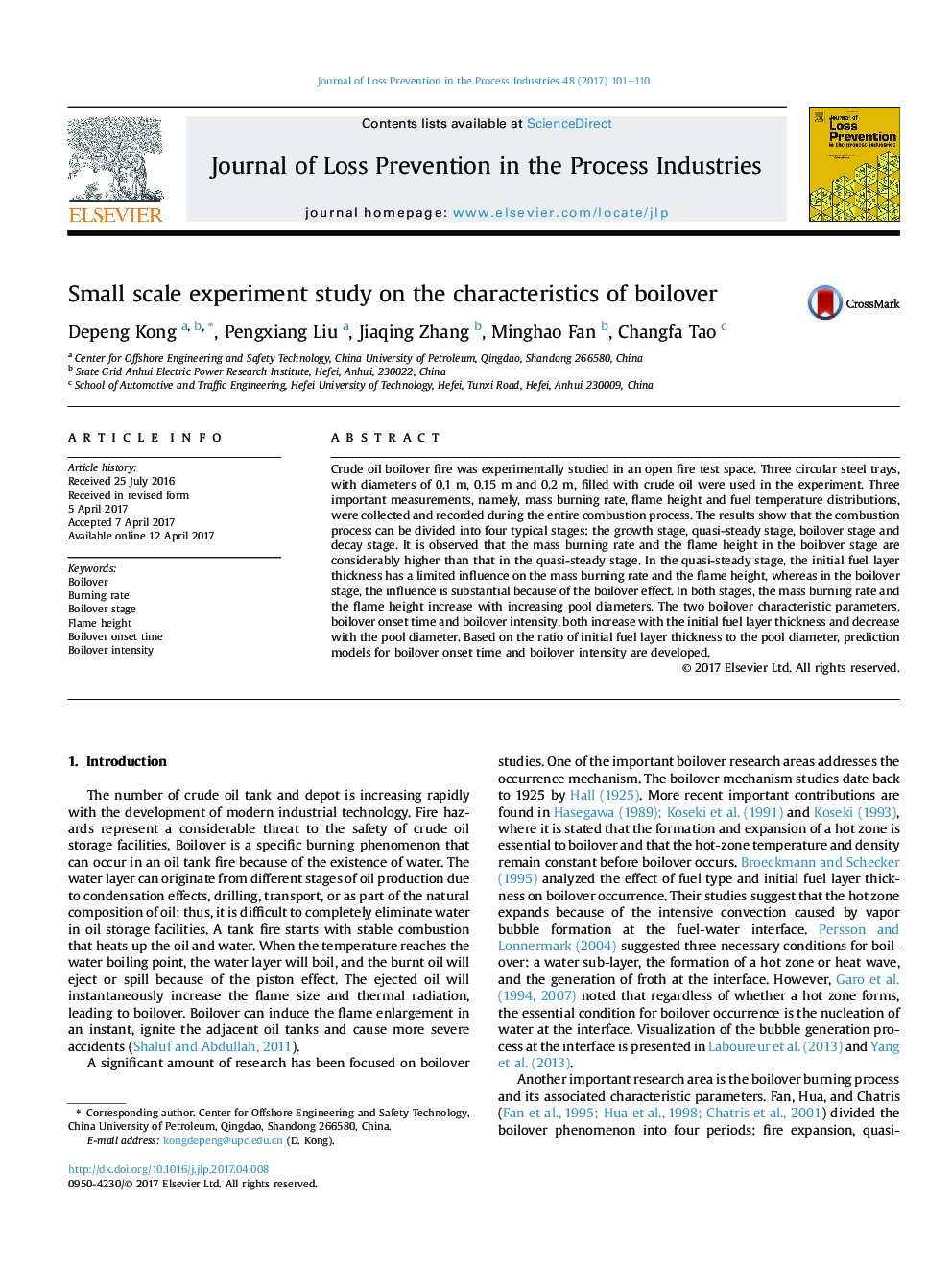| Article ID | Journal | Published Year | Pages | File Type |
|---|---|---|---|---|
| 4980369 | Journal of Loss Prevention in the Process Industries | 2017 | 10 Pages |
Abstract
Crude oil boilover fire was experimentally studied in an open fire test space. Three circular steel trays, with diameters of 0.1Â m, 0.15Â m and 0.2Â m, filled with crude oil were used in the experiment. Three important measurements, namely, mass burning rate, flame height and fuel temperature distributions, were collected and recorded during the entire combustion process. The results show that the combustion process can be divided into four typical stages: the growth stage, quasi-steady stage, boilover stage and decay stage. It is observed that the mass burning rate and the flame height in the boilover stage are considerably higher than that in the quasi-steady stage. In the quasi-steady stage, the initial fuel layer thickness has a limited influence on the mass burning rate and the flame height, whereas in the boilover stage, the influence is substantial because of the boilover effect. In both stages, the mass burning rate and the flame height increase with increasing pool diameters. The two boilover characteristic parameters, boilover onset time and boilover intensity, both increase with the initial fuel layer thickness and decrease with the pool diameter. Based on the ratio of initial fuel layer thickness to the pool diameter, prediction models for boilover onset time and boilover intensity are developed.
Keywords
Related Topics
Physical Sciences and Engineering
Chemical Engineering
Chemical Health and Safety
Authors
Depeng Kong, Pengxiang Liu, Jiaqing Zhang, Minghao Fan, Changfa Tao,
